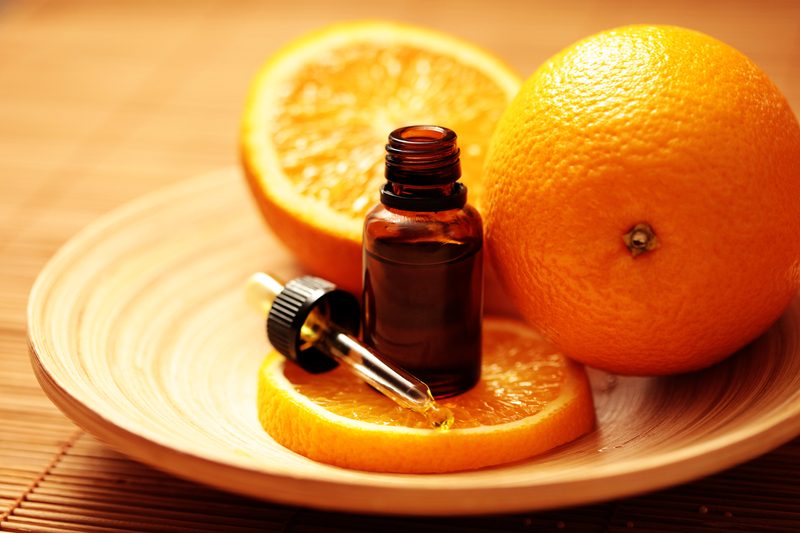Innovative Approaches to Clean Mould on Window Sills
Posted on 12/06/2025
Window sills are the unsung guardians of your home, standing vigil against rain, condensation, and draft. Yet, this exposure makes them prime real estate for mould growth. Not only is mould unsightly, but it's also a significant health hazard, especially for those with allergies or respiratory conditions. Traditional cleaning methods can be effective, but in today's era of technology and environmental consciousness, innovative ways to clean mould on window sills have emerged. Here, we cover the latest and most effective techniques, tools, and preventative strategies for keeping your window sills fresh, clean, and mould-free.
Understanding Why Mould Loves Window Sills
Before diving into the most advanced and eco-friendly mould cleaning solutions, it's essential to understand why mould forms on window sills in the first place. Here are the key reasons:
- Condensation: The clash between warm indoor air and cold glass often results in moisture, pooling on your window sills.
- Poor Ventilation: Lack of airflow encourages humidity, creating a haven for mould spores to thrive.
- Organic Debris: Dust, pollen, and even dead insects on window sills provide food for mould colonies.
Without intervention, black mould and other types can quickly spread, compromising indoor air quality and even damaging paint or wood. But don't worry--recent advances mean you can tackle the problem more effectively than ever!

Why Choose Innovative Cleaning Methods?
Traditional mould cleaning relies heavily on harsh chemicals like bleach and relentless scrubbing. While these approaches can be effective, they come with several drawbacks:
- Toxicity: Chemical fumes are hazardous, especially in poorly ventilated spaces.
- Environmental Impact: Chemical runoff can harm the environment.
- Ineffectiveness Against Regrowth: Bleach may not penetrate porous surfaces or kill mould roots, leading to rapid recurrence.
*Innovative approaches* combine modern materials, green chemistry, advanced appliances, and even smart-home technologies to break the cycle and provide sustainable, long-lasting results.
Cutting-Edge Methods to Clean Mould on Window Sills
1. Enzyme-Based Mould Cleaners
One of the most promising innovative solutions for mould removal involves the use of enzyme-based cleaners. These products harness naturally occurring enzymes and beneficial bacteria that break down mould colonies at a molecular level, effectively digesting their cellular structure without harsh chemicals. Benefits include:
- Non-toxic: Safe for people, pets, and plants.
- Odor-Neutralizing: Eliminates musty smells by removing the root cause.
- Biodegradable: No negative impact on the environment.
Simply spray the product on the affected area, wait for the recommended time, and wipe clean. This innovative approach is ideal for families seeking a greener yet effective solution.
2. Steam Cleaning Technology
*Steam cleaning*, long used for floors and upholstery, has become a game-changer for eliminating mould on window sills. Using a handheld steam cleaner with a narrow nozzle:
- Penetrates cracks and crevices where spores lurk.
- Kills both visible mould and hidden spores with high heat (over 212?F or 100?C).
- Sanitizes surfaces with only water--no chemicals needed.
For best results, finish by wiping excess moisture and applying a quick-dry fan to prevent re-colonization.
3. UV-C Disinfection Lamps
Ultraviolet light, particularly UV-C (wavelengths between 200-280 nm), is a proven anti-microbial agent that inactivates mould and bacteria by disrupting their DNA. Today, *portable UV-C wands* or *fixed UV-C lamps* can be used safely to sanitize window sills and surrounding surfaces:
- Non-contact application eliminates cross-contamination.
- Can be incorporated into smart home systems for regular disinfection cycles.
- Highly effective in hard-to-reach corners and seams.
Always follow manufacturer safety instructions, as UV-C light exposure can be harmful to skin and eyes.
4. Electrolyzed Water (ECA Technology)
Electrolyzed Water, also known as Electrochemical Activation (ECA), is a groundbreaking cleaning solution increasingly used in hospitals and the food industry. By using a device that runs a mild electrical current through saltwater, you create an eco-friendly, non-toxic disinfectant that kills mould spores within seconds. Advantages include:
- No chemical residue or fumes.
- Readily available and cheaper long-term.
- Can be made fresh on-demand at home.
Simply spray the electrolyzed water and wipe; for stubborn stains, repeat the process.
5. Nanotechnology-Based Surface Protectants
Emerging *nanotechnology coatings* offer a proactive way to not only remove but prevent mould on window sills. After cleaning, apply a nanotech-based sealant, which forms a super-thin, invisible barrier that repels water and resists bacterial and fungal colonization. Features include:
- Lasts for months or even years with a single application.
- Maintains the look and feel of the original surface.
- Simplifies future cleaning and inhibits future growth.
6. Smart Home Monitors for Humidity and Air Quality
Sometimes, the best way to clean mould on window sills is to prevent its formation altogether! Today's affordable smart home gadgets can monitor humidity and alert you via smartphone if levels get high enough to risk condensation and mould. Integration with dehumidifiers and fans ensures your window sills remain dry year-round.
Step-By-Step Guide: Innovative Mould Cleaning Routine for Window Sills
Want to put these approaches together for superior results? Follow this comprehensive routine every few months or whenever you notice signs of mould:
- Assess and Prepare
- Open windows for ventilation or wear a protective mask if you're sensitive to mould.
- Remove curtains or blinds and launder if mould is present.
- Vacuum the window sill with a HEPA-filtered vacuum to remove loose spores and debris.
- Initial Treatment
- Apply an enzyme-based cleaner or spray down with electrolyzed water.
- Allow the product to dwell as directed (usually 10-20 minutes).
- Deep Cleaning
- Use a steam cleaner or scrub with a soft-bristled brush to lift stubborn colonies.
- Wipe away residue with a microfiber cloth.
- Sanitization and Protection
- Pass a UV-C wand over the area for added disinfection.
- Once dry, apply a nanotech protectant to the sill and frame.
- Preventative Monitoring
- Set up a humidity sensor nearby; maintain indoor humidity below 60%.
- Schedule reminders for regular cleaning and monitoring via your smart device.
Natural and Eco-Conscious Alternatives for Mould Removal
While high-tech and specialized products are advancing the way we clean mould on window sills, sometimes simple, natural methods can be effective, especially for mild cases or frequent upkeep. Here are some green alternatives:
- White Vinegar:
- Spray undiluted vinegar onto mould-affected surfaces. Let it sit for an hour, then scrub and wipe clean.
- Baking Soda:
- Mix one teaspoon of baking soda in two cups of water. Spray or apply with a cloth, scrub, and rinse. Baking soda deodorizes and prevents regrowth.
- Hydrogen Peroxide:
- Apply 3% hydrogen peroxide, let bubble for 10 minutes, then scrub clean. Great for white or light-colored window sills.
- Tea Tree Oil:
- The natural antifungal properties make tea tree oil an excellent choice. Mix 1 teaspoon with a cup of water, spray on, and leave to dry.
These solutions work best if applied regularly and at the first sign of mould growth. They're also an excellent complement to more advanced technologies.
Preventing Mould: The Ultimate Long-Term Strategy
As the saying goes, "An ounce of prevention is worth a pound of cure." To ensure the cleaning of mould on window sills is infrequent or even unnecessary, adopt these preventative measures:
- Improve Ventilation: Open windows daily or install window fans to reduce humidity.
- Invest in Dehumidifiers: Especially for rooms where condensation is unavoidable (e.g., bathrooms, kitchens).
- Insulate Windows: Use double glazing or insulating tape to reduce temperature differentials and condensation.
- Regular Dusting: Keep sills free of debris that feeds mould.
- Inspect and Repair: Address leaky windows, pealing paint, and window cracks promptly to eliminate moisture ingress.

Frequently Asked Questions About Cleaning Mould from Window Sills
Is it safe to clean mould myself, or should I call a professional?
For small areas (under 1 square meter) and non-toxic mould, *DIY cleaning* with innovative products is generally safe. For extensive infestations or toxic black mould, consult a remediation expert.
How often should I clean my window sills to prevent mould?
Clean sills at least once every 1-2 months, or more frequently in damp climates or homes with recurring condensation.
What is the best way to remove mould stains from painted wood?
After removing the mould biologically (with enzymes or vinegar), gently sand the affected area and touch up with mildew-resistant paint for a restored finish.
Does sunlight help prevent window sill mould?
Yes! Sunlight naturally inhibits mould growth by keeping surfaces dry and exposing spores to UV rays. Keep curtains open to maximize natural light.
Conclusion: Choose Innovation for a Healthier, Cleaner Home
The battle against mould on window sills is ongoing, but thanks to innovative cleaning methods--ranging from enzyme bio-cleaners and steam devices to nanotech coatings and smart monitoring devices--victory is truly within reach. By combining these modern solutions with responsible maintenance and natural alternatives, you can ensure your living space is not only aesthetically pleasing but also healthier for you and your family.




